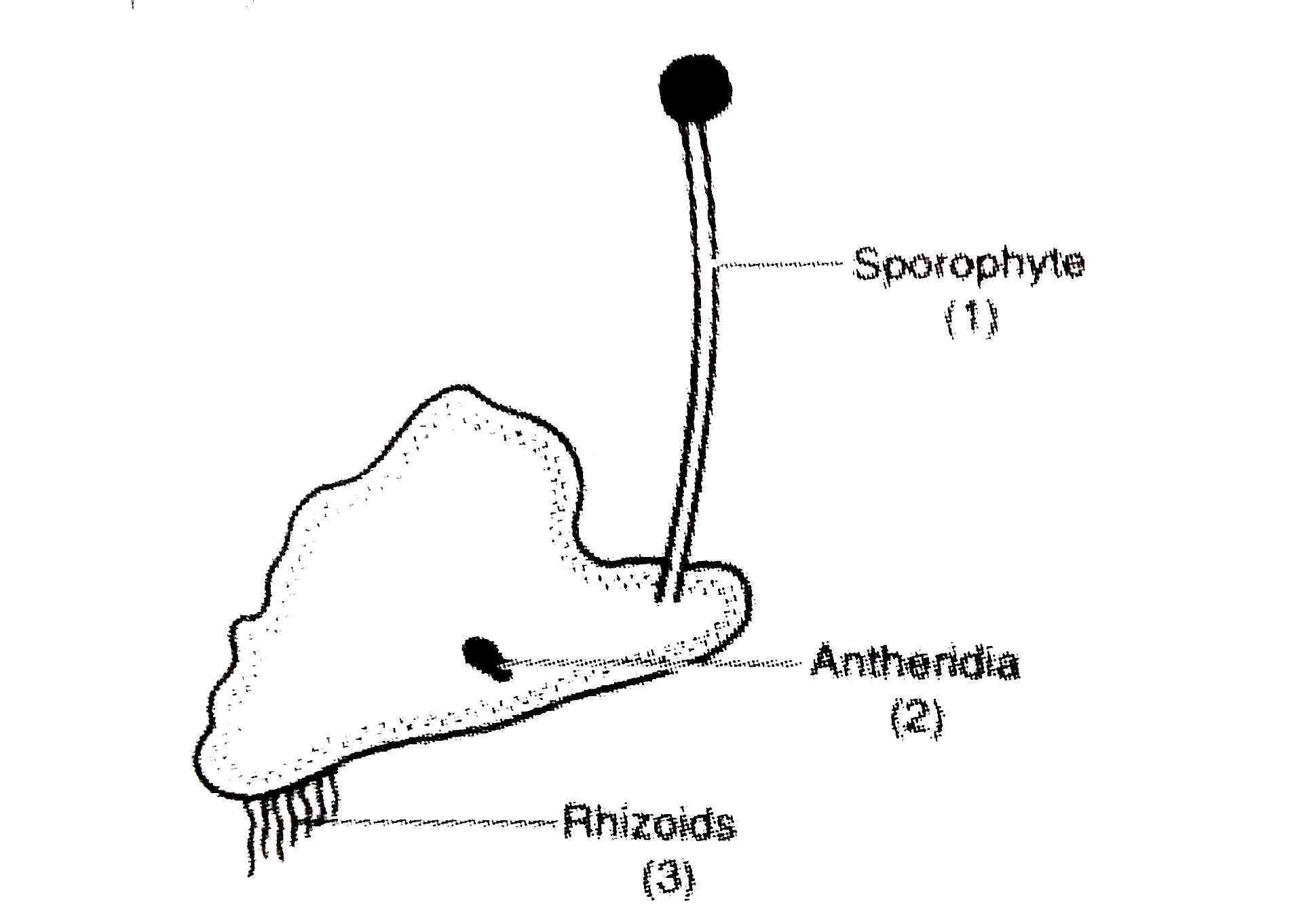The ploidy level is not the same in:
Integument and nucellus
Root tip and shoot tip
Secondary nucleus and endosperm
Antipodals and synergids
The correct Answer is:C
To solve the question regarding the ploidy levels that are not the same, we will analyze the options provided and determine their respective ploidy levels.
1. Understanding Ploidy Level:
- Ploidy refers to the number of sets of chromosomes in a cell. Common ploidy levels include:
- Haploid (N): One set of chromosomes.
- Diploid (2N): Two sets of chromosomes.
- Triploid (3N): Three sets of chromosomes.
2. Analyzing the Options:
- Option A: Integument:
- The integument is the outer covering of the ovule in flowering plants. It is derived from the diploid sporophyte generation.
- Ploidy Level: 2N (Diploid).
- Option B: Nucellus:
- The nucellus is the central part of the ovule and is also diploid.
- Ploidy Level: 2N (Diploid).
- Option C: Root Tip and Shoot Tip:
- Both root tips and shoot tips arise from the meristematic tissues of the plant, which are also diploid.
- Ploidy Level: 2N (Diploid).
- Option D: Secondary Nucleus and Endosperm:
- The secondary nucleus is formed from the fusion of two polar nuclei within the embryo sac, making it diploid.
- Ploidy Level: 2N (Diploid).
- The endosperm is formed when a male gamete (haploid, N) fuses with the secondary nucleus (diploid, 2N), resulting in a triploid structure.
- Ploidy Level: 3N (Triploid).
3. Conclusion:
- The only pair of structures that have different ploidy levels is the secondary nucleus (2N) and the endosperm (3N). Therefore, the answer to the question is:
Answer: Secondary nucleus and endosperm.
- Ploidy refers to the number of sets of chromosomes in a cell. Common ploidy levels include:
- Haploid (N): One set of chromosomes.
- Diploid (2N): Two sets of chromosomes.
- Triploid (3N): Three sets of chromosomes.
- Option A: Integument:
- The integument is the outer covering of the ovule in flowering plants. It is derived from the diploid sporophyte generation.
- Ploidy Level: 2N (Diploid).
- The nucellus is the central part of the ovule and is also diploid.
- Ploidy Level: 2N (Diploid).
- Both root tips and shoot tips arise from the meristematic tissues of the plant, which are also diploid.
- Ploidy Level: 2N (Diploid).
- The secondary nucleus is formed from the fusion of two polar nuclei within the embryo sac, making it diploid.
- Ploidy Level: 2N (Diploid).
- The endosperm is formed when a male gamete (haploid, N) fuses with the secondary nucleus (diploid, 2N), resulting in a triploid structure.
- Ploidy Level: 3N (Triploid).
- The only pair of structures that have different ploidy levels is the secondary nucleus (2N) and the endosperm (3N). Therefore, the answer to the question is:
Similar Questions
Given is a picture of bryophyte. The correct ploidy levels of the indicated structures are

View SolutionThe male gamete is x and egg is 3x. The ploidy level in embryo and endosperm will be
View SolutionThe ploidy level of egg apparatus is
View SolutionIf the chromosome number in a meiotically produced gamete of a plant is 10,then the ploidy level of that plant is
View SolutionWhen a diploid female plant is crossed with a tetraploid male, the ploidy level of endosperm cells in the resulting seed is:
View SolutionIf the male plant is tetraploid and female plant is diploid, what will be the ploidy level of endosperm after fertilization ?
View SolutionState true or false and correct each flase statement to make it true
(i) The ploidy level of female gametophyte is diploid in flowering plants
(ii) Integumented megasporangum is also called as ovary
(iii) The embryo sac lies at chalazal end of ovule
View SolutionThe ploidy level of secondary nucleus of embryosac is :-
View SolutionThe ploidy level of nucellus and female gametophyte respectively is
View SolutionThe ploidy level of nucellus and MMC in Ficus ovule will be respectively
View Solution
